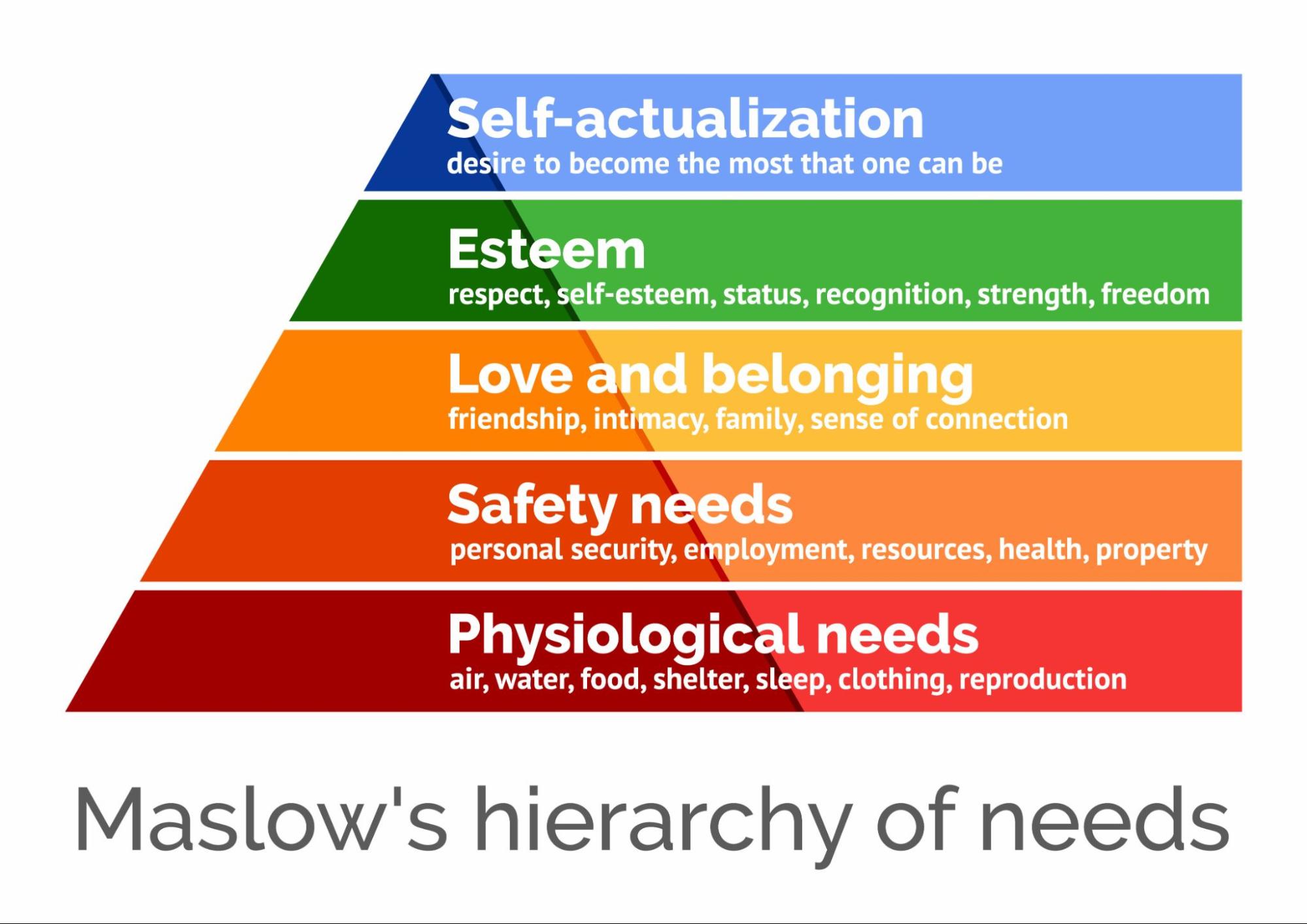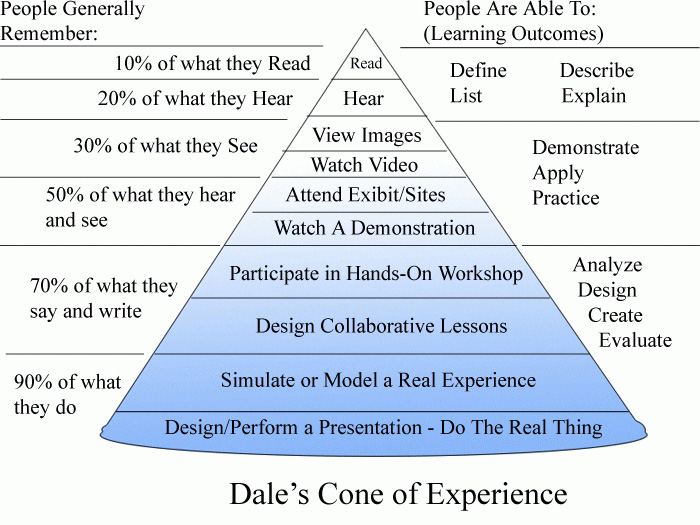Marketing Psychology: Influencing the Way People Think

Over the past few decades, neuroscience research has revealed that over 95% of our purchasing decisions take place in the subconscious mind. This means that the vast majority of the time, we aren’t aware of our decision-making processes, nor are we guided by logic or reason. We make snap decisions based on feelings, intuition, and the external factors affecting our cognition.
In order to succeed in marketing and sales, you have to know your audience. You have to understand how they think, how they react to different messages, and how to connect with them on a human level. In this article, we’ll get acquainted with the field of neuromarketing and explore a few key principles of psychology that can be applied directly to your business.
Table of Contents
1. Maslow's Hierarchy of Needs
Maslow’s hierarchy of needs, theorized in 1943, is the framework traditionally used for understanding the order in which humans are motivated to fulfill each of their innate needs and desires. As you can see in the pyramid diagram below, he splits the drivers of motivation into 5 stages: psychological needs, safety needs, love and belonging, esteem, and self-actualization. In this theory, Maslow claimed that people have to satisfy the basic needs, at the bottom of the pyramid before progressing and moving on to focus on higher-level needs. In other words, people must first meet their basic physiological needs, like water, food, and shelter, before they can start worrying about anything else, like employment or freedom.
In marketing, businesses use Maslow’s hierarchy to figure out the most urgent needs of their target customers and then satisfy these needs through their products or services. For example, if you’re trying to sell kids' bicycles, then you have to keep in mind that the buyer (the kids’ parents) will be especially concerned about fulfilling “safety needs,” so you could include a set of training wheels and a helmet for free. And if you sell luxury handbags, this sort of purchase comes from a desire for “status.” To answer this core need, you could design the bags with the same iconic color scheme or make the brand name huge and visible.

2. Dale’s Cone of Experience
Dale’s Cone of Experience is a famous model of learning processes from the 1960s that shows how people typically intake and remember information. According to Edgar Dale’s model, the most effective method for conveying information and making it stick is through some form of experience. This is usually a type of active output, in which the learner does role-play or participates in a simulation or workshop. The second best method for teaching involves helping your audience visualize information through images or video, or perhaps via a live demonstration where they can listen to your explanation while seeing the real thing. Finally, the hardest way to get your listener to comprehend and retain a new subject is just by reading text or listening to a lecture.
This basic model of learning is relevant to your sales and marketing because you are always trying to convey a message, to communicate some information to your audience. Whether you’re trying to spread brand awareness or convince a prospect that your product is a great choice for them, you need them to understand and remember what you’re saying. Of course in advertisements or presentations, multimedia like images, animations, and videos must be skillfully incorporated, but you also need to add an experience to this mix. As an example of “experience,” you could hold a webinar and include discussion and workshops to get customers engaged and making discoveries and connections on their own.

3. The Baader-Meinhof Phenomenon
You know how sometimes you hear about something for the first time, and then you start noticing it everywhere? This is a cognitive bias called the Baader-Meinhof phenomenon, or the frequency illusion, in which increased awareness of something makes you think you’re seeing it way more often than you did before, which leads to the misconception that it’s suddenly an uber-popular, trending topic.
You can take advantage of the Baader-Meinhof phenomenon in your marketing by following a few best practices. The first is multi-channel marketing - for instance, when you publish a new blog on your site, share it on all your social media avenues and email. This will massively increase the likelihood your content gets exposed to a wider audience. Next, if you regularly post customer testimonials or reviews, you can reinforce the idea that your product is rapidly growing in popularity. This strategy appeals to confirmation bias, which states that people tend to look for information that proves their suspicions. With Baader-Meinhof, the individual already has the impression that your brand is suddenly trending, and that explains how they have never heard of your brand before. That connects to why lead nurturing is important: after the first point of contact, you’ll want to send targeting emails and advertisements repeatedly over a long period of time, to keep the perception that your product is popular and relevant to them.
4. Action Paralysis Principle
The action paralysis principle states that people have a tendency to overanalyze and second-guess their own choices, causing them to enter a state of paralysis, preventing any sort of outcome, positive or negative. In an experiment by Columbia Business School Professor Iyengar, shoppers were offered 6 or 24 different flavors of jam, but the overload of choices in the 24-flavor group resulted in significantly fewer purchases at a ratio of around 8 to 1. People feel mentally exhausted when presented with too many choices and then struggle to make a decision.
Further, people struggle even more to make buying decisions that will potentially benefit them in the long-term, investing in their future selves. Studies have shown that people make choices with “case-based reasoning,” meaning that they make current decisions by referencing personal experiences from the past. Deloitte Insights brings up the example of choosing a retirement plan. You have no past reference points to help you choose wisely, which makes the decision process even more overwhelming. As a result, people procrastinate on making choices for their future selves and focus on decisions or actions that will benefit them in the short term.
Tying this back to business, you can prevent customers from falling into a state of action paralysis by simplifying the set of options and defining what they could potentially gain from choosing your product. Then to overcome a case of paralysis, you could also employ methods to speed up the decision-making process: create a sense of urgency with a limited-time-only offer or reduce friction in the buyer’s journey, like Amazon did by introducing the one-click purchase button.
5. The Decoy Effect
The decoy effect, or asymmetric domination, is another cognitive bias in decision-making. When faced with a tough decision between two options, your perceptions of price can be changed if a third option is added. This third option, called the decoy, is not really what you intend to sell. You just want to make another option seem more reasonable by comparison, and help customers make a quicker decision.
Check out this short explanation of the decoy effect by National Geographic.
Here, through asymmetrical pricing, the large-sized popcorn for $7 looks like a ripoff when paired only with a small option priced at $3. But when you add in a medium size at $6.50, then the logic becomes that with only 50 cents more you could buy a large! What a steal!
Utilize the decoy effect by offering your product plans in sets of three, and mix in a decoy option that is a bit overpriced, to make the middle-priced option seem cheaper. In this way, you can provide customers with a frame for perceiving price and value.
6. Loss Aversion
Loss aversion is the idea that individuals feel the pain of a loss twice as intensively as they feel the pleasure of a gain. So, though it doesn’t make much logical sense, losing $100 from your wallet is way more devastating that winning $100 is exciting. And even if the potential for ROI is extremely high, a relatively smaller risk can easily deter someone from buying stock, for example.
This cognitive bias is frequently applied in sales by offering products on a free trial basis at first, and then once they have invested some time in the product and have learned how to use it, the loss is seemingly too high to let go of the product so they choose to move onto a paid subscription. You can also set a time frame for a discount or announce the “limited stock left,” to appeal to their natural FOMO (fear of missing out), because missing a chance to buy could also be perceived as a major loss.
7. Reciprocity
The principle of reciprocity is the natural tendency for people to want to return the favor when something is given to them. In business interactions, you could give your customers a personalized experience, extra support, discounts or special promotions, free ebooks, and help them in many other ways. Then, thanks to reciprocity, they will feel a sense of obligation to pay you back and do something nice in return.
Consider this. A sociologist, Phillip Kunz, conducted an experiment in 1974 in which he sent out Christmas cards to 600 strangers, complete with a handwritten note and family photo. Soon enough, replies started rolling in and Kunz received a whopping total of approximately 200 cards back. This wholesome experiment strengthened the reciprocity theory, showing how people naturally want to actively return another’s kindness - even if they have no previous relationship.
One thing to keep in mind is that reciprocity doesn’t work if your approach is not genuine. The customer has to believe that you’re giving them a better deal or helping them for their own sake, not to push them towards a sale. If the prospect looks like they’re leaning towards not buying, then you suddenly throw in a 10% discount, it might seem like a desperate attempt to sell. Reciprocity is born out of authentic acts of goodwill, so if you want to offer a better deal, then you should do so from early-on in the negotiation.
8. Social Proof
Social proof is a psychological phenomenon where consumers imitate the behavior of people around them, especially the people they respect. It is the result of our innate desire to fit in, along with the assumption that others know better than we do in unfamiliar environments. Social proof is especially visible in large groups, due to the “herd mentality” - the tendency of groups to conform to a single, distinctly uniform behavior.
So how is this relevant to marketing? Social proof is important because it is ubiquitous across buyer journeys of all industries and products. The vast majority of customers refer to testimonials, product reviews, and commentary on social media before buying a product. In fact, 91% of shoppers read through Amazon reviews before clicking “buy.” Also, positive user-generated content (UGC) is free advertising and extremely powerful in driving new customer interest. Social proof is essentially why influencer marketing works - people follow their leaders and role models, and when they personally sponsor or recommend a product, those followers trust their advice and in turn, purchase it for themselves.
9. Manipulating the Senses
Sensory marketing refers to marketing that appeals to the five senses of sight, sound, touch, taste, and smell. Through a multisensory marketing strategy, you can create a complete, memorable customer experience and encourage a specific reaction to your brand.
SCENT:
First, scents can be used to make your brand instantly recognizable and to affect your customers’ moods or a store’s ambiance. A relaxing aroma like lavender could be used in a hospital or spa, luxury products could be scented like leather to seem more expensive, and the smell of fresh linen could be used to make an otherwise sweat-filled gym seem pleasant and clean.
Another great example of scent marketing is by the Destinia travel agency in Madrid, Spain. Destinia installed odor dispensers in Madrid’s subways and programmed them to spew scents that reflected the regions they were passing through, such as the famous wine of the area. Then if you guessed the scent correctly on social media, you earned a chance to win a hotel stay in that area. This not only grew brand identity for local products, but promote engagement with new customers as well.
SOUND:
Music can also be used strategically to influence customers’ moods and encourage certain behaviors. For example, Abercrombie and Fitch plays pop music at a booming 90 decibels in order to (1) attract their target demographic of teens to young adults and (2) to overstimulate the customers so they make impulsive purchases.
In commercials, brands reuse their classic jingles again and again to spread brand awareness and to get their theme song stuck in the minds of consumers. Some famous examples of these include Subway’s “Five Dollar Foot Long” song, Huggies’s “I’m a Big Kid Now,” and Nationwide’s “Nationwide is on Your Side.”
TOUCH:
The sense of touch allows for customers to literally feel your brand in their hands, and can directly affect their perceptions. In Psychology Today’s The Power of Touch, Rick Chilliot discusses how research has shown how “seemingly insignificant touches yield bigger tips for waitresses, that people shop and buy more if they’re touched by a store greeter. [...] Call it the human touch, a brief reminder that we are, at the core, social animals.”
This is not to say you need to go give your client a hug - but a tactile experience of some kind could improve how they feel about an interaction with your brand. For example, if you open a booth at a trade show, you could incorporate active, hands-on activities like branded games or an activity to design something yourself to take home. Apple understands the importance of touch, which is why Apple stores let you pick up and toy around with smartphones and tablets as much as you like.

.jpg)
.jpg)
.jpg)


